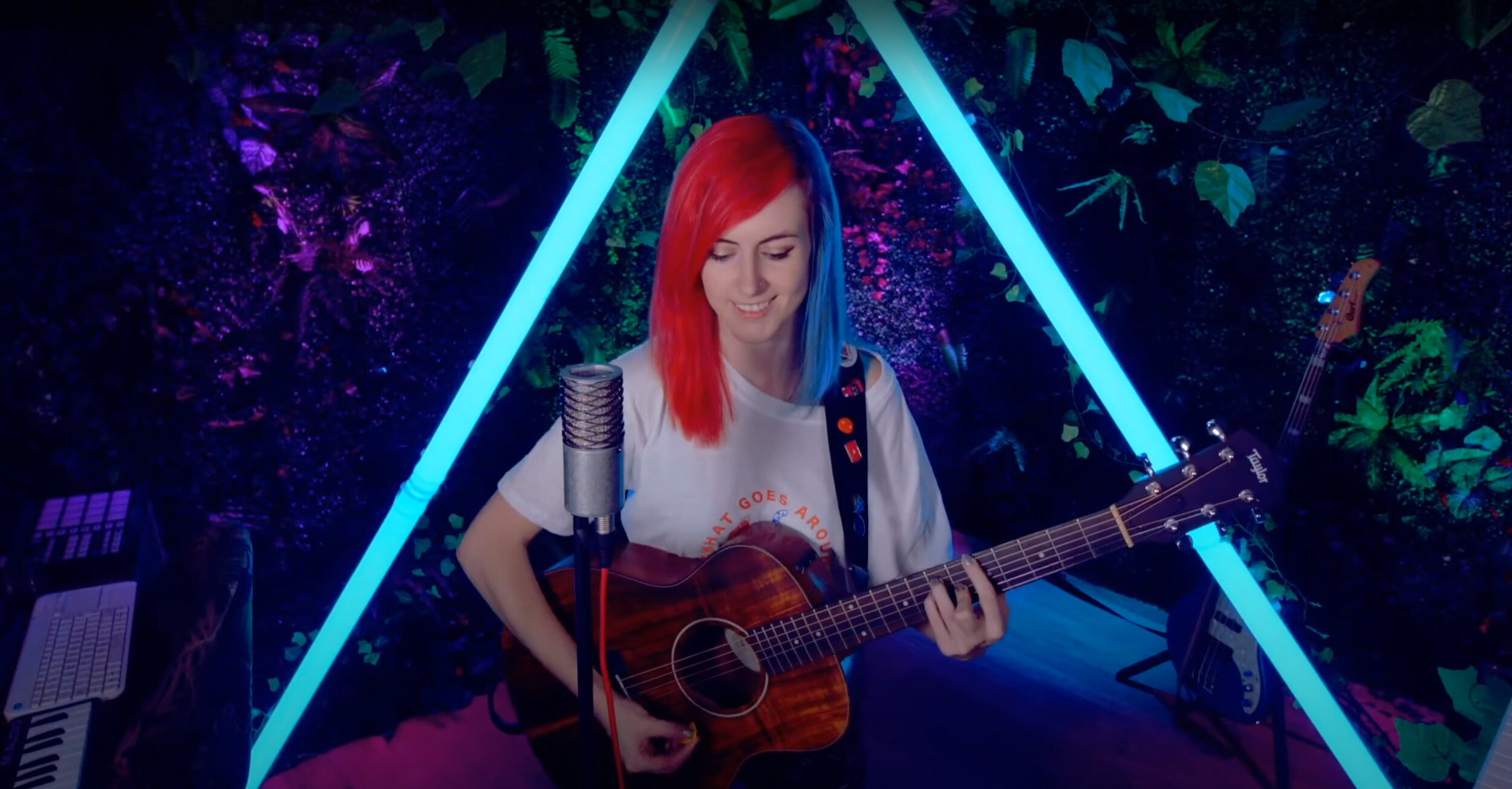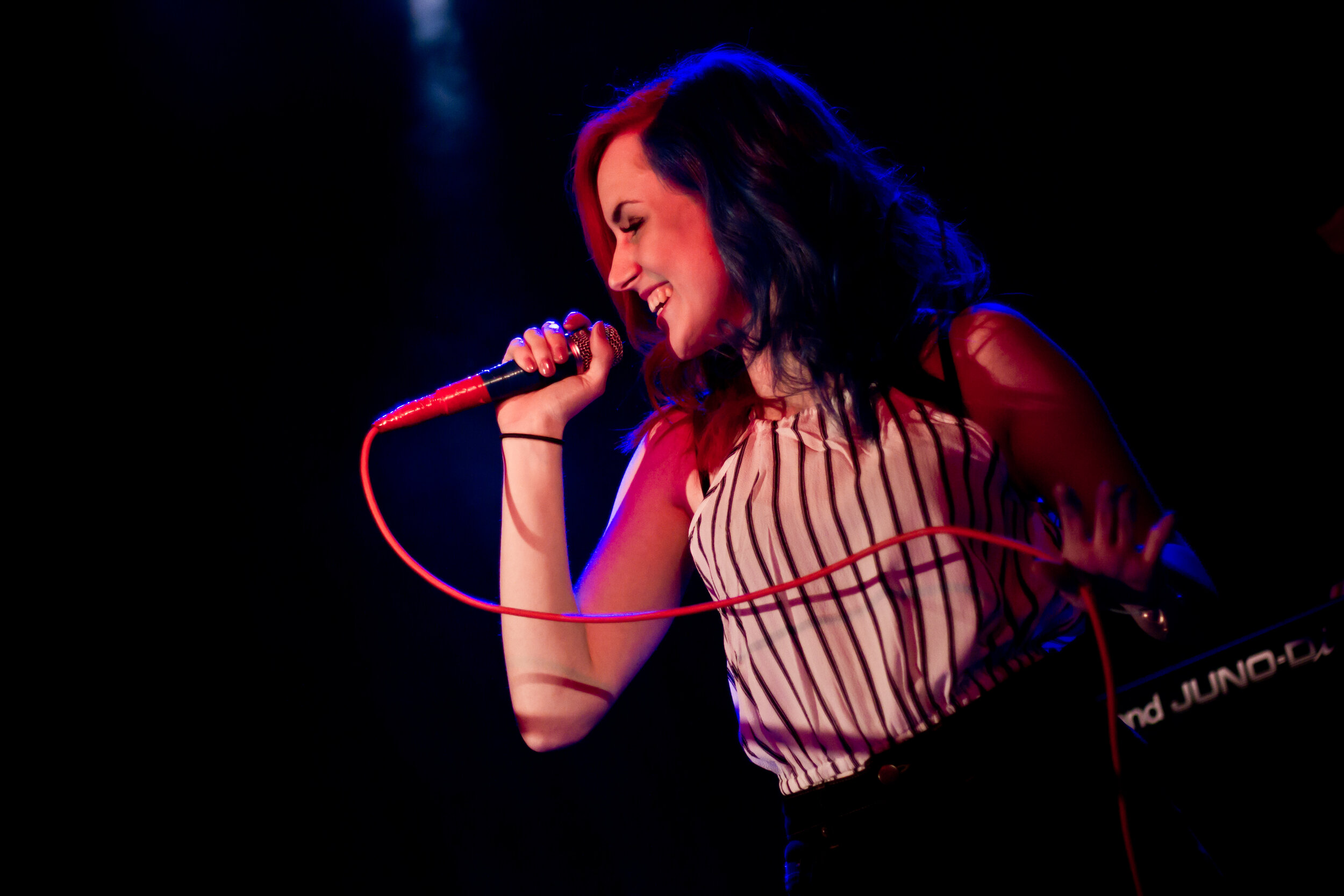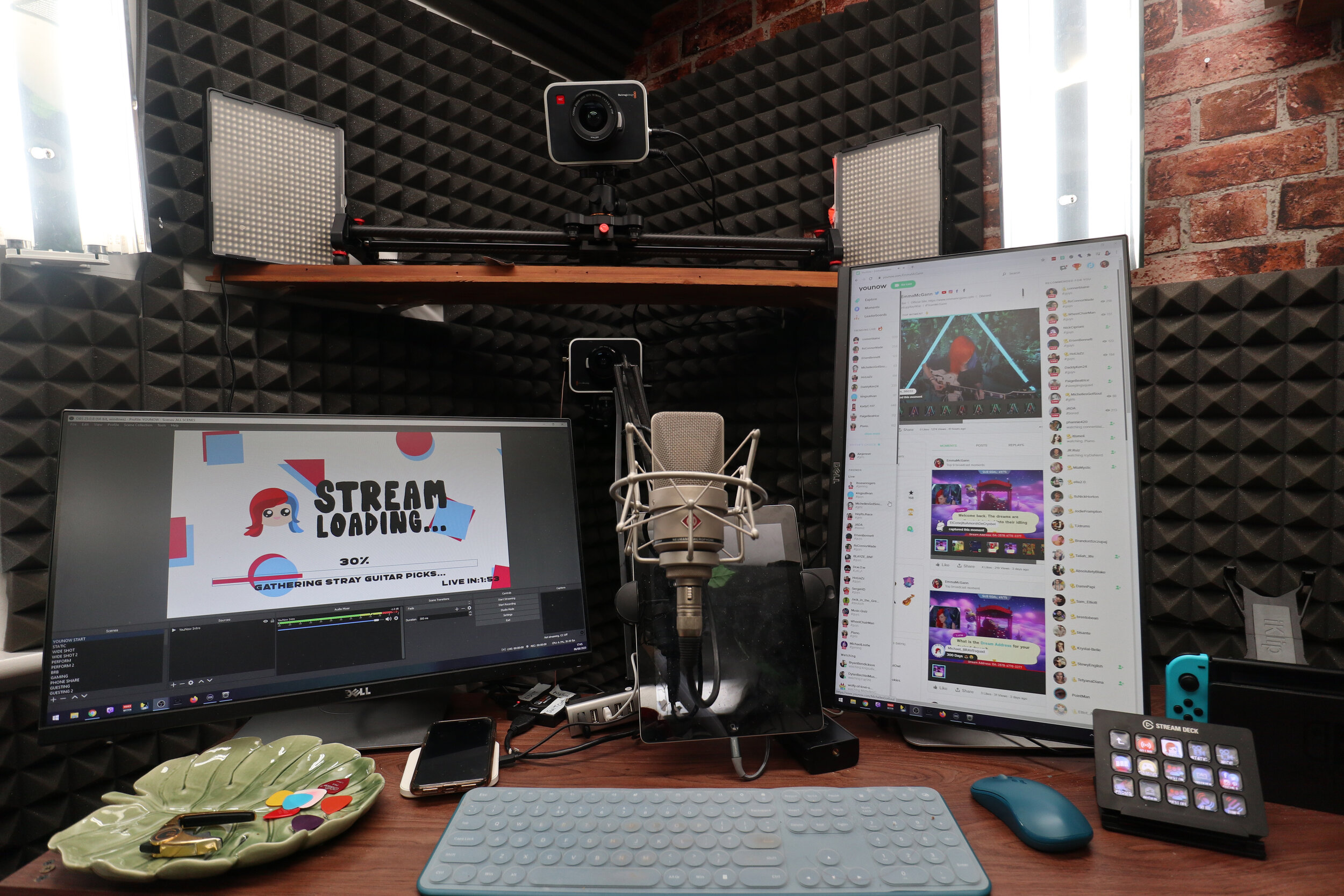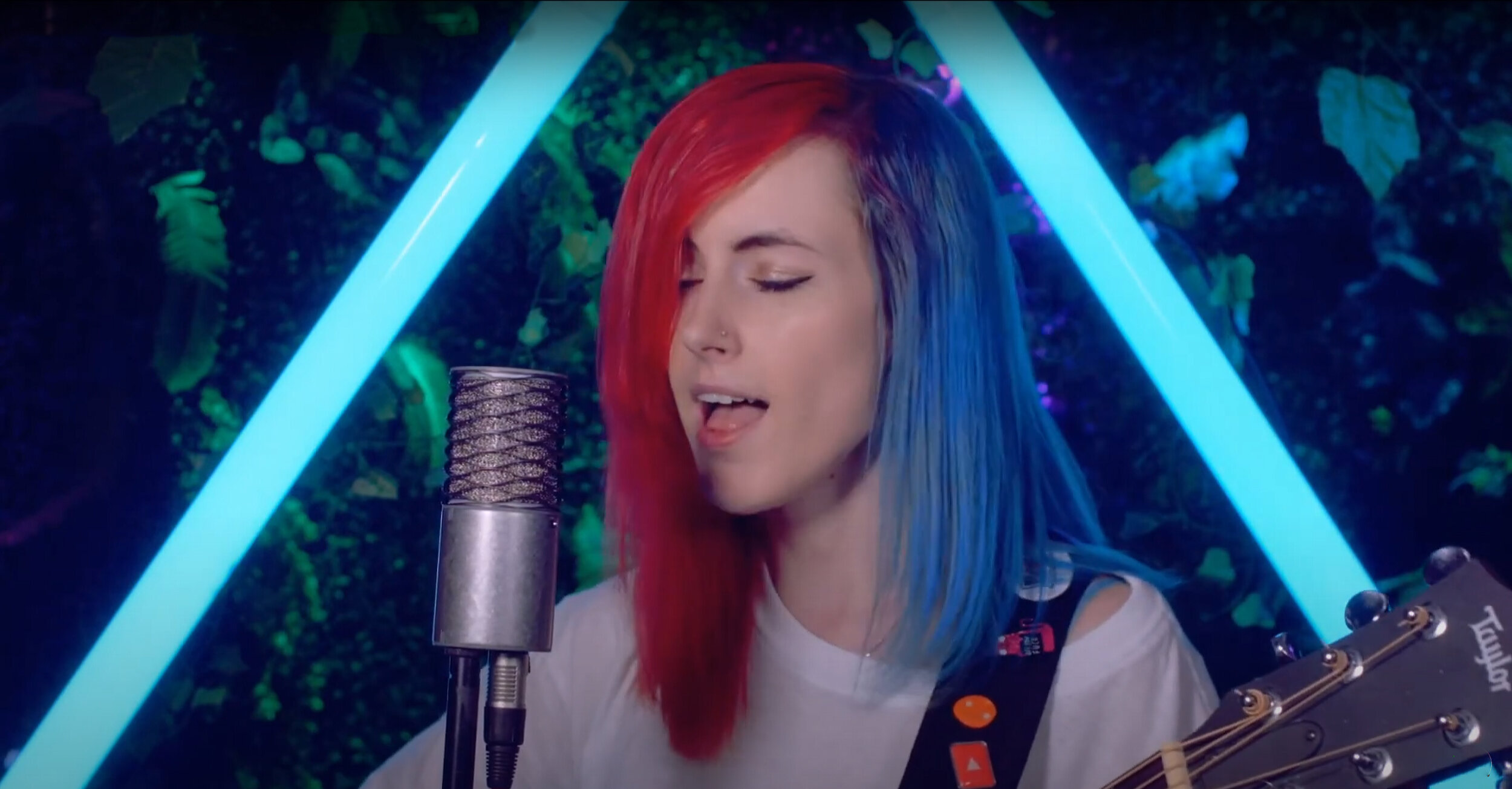FAC Insights: Livestreaming before, during & beyond a pandemic world by Emma McGann
FAC Insights is a forum for us to showcase and share long form pieces looking at various parts of the music industry and the society that shapes it. There are no real boundaries beyond that and pieces take the form of videos, interviews, discussions, articles and more. This week we are delighted to share this piece written by the talented artist, streaming guru and FAC advocate Emma McGann.
Livestreaming before, during & beyond a pandemic world
2020 has been a complete turning point for livestreaming. As someone who has always pursued unconventional paths for my music career, livestreaming my life as an artist has been a big part of my strategy - I’ve been ‘going live’ for 7 years now. So it’s been interesting to see more musicians, artists and fans step into my world and unlock what was previously a widely overlooked format, in order to stay connected during the pandemic. As artists we've needed to fulfill the urge to perform and showcase our music. So while venues are currently not an easy option, a live feed from our own living rooms has been the next best thing.
Before
Largely over the years, it’s been predominantly viewed as a route for gamers. But early platforms such as YouNow (one of the first to integrate monetisation) positioned themselves as a platform for anyone from the beginning, opening up the possibility for musicians, internet personalities and really anyone with a camera on their phone to go live at a moment's notice. I was lucky enough to become one of the first partners on YouNow - this meant I was one of the first artists in the world to be making a full time living sharing my music through this newfound medium.
I first recognised the value of going live in the back of a tour bus 7 years ago. I’d been on tour for two weeks and went live for the first time to perform some songs. In 1 hour, I’d had a bigger spike in interaction online and sold more merch than I did in the first week of physically touring. And it cost me absolutely nothing except a little time to balance the camera to get the perfect shot. I remember wondering back then why it wasn’t already an option on every social platform already, alongside the options of updating your status or just posting a photo. Two years later in 2015, Twitter launched Periscope and was the second major social platform (after YouTube) to integrate the option to go live, with Facebook and Instagram quickly following suit in 2016.
During
As an experienced music streamer I’ve felt a responsibility this year to mentor and help artists get comfortable in the space. And these conversations have made me realise there’s mixed opinions in approaching broadcasting for the first time. On one hand, some have been reluctant, either because of a lack of knowledge or because they don’t want to entertain staring into a camera at home as an option. Whereas others have enthusiastically dived in, trying out which platform works best for them and even just sitting as an audience member to take it all in. The truth is, going live really isn’t for every artist… just as any other platform may not be up your street either. Not all of us create YouTube content… not all of us tweet. And not all of us will livestream. (For those that will: see the Ultimate Livestreaming Guide Video Series for set-up help and tech recommendations).
It’s been encouraging to see a shift across existing platforms this year, as they’ve been active in finding welcoming ways to accommodate music streamers in particular because of the hardship the pandemic has brought upon the industry. Platforms like YouNow have continued to champion music streamers through spotlighting live music content via virtual festivals and contests organised by the community (see Kim Maverick, a newly partnered YouNow musician). We’ve seen Twitch spotlight the ‘Music’ category on the front page of their platform (See DanDrumStone, an engaging and highly skilled drumming streamer on Twitch). We’ve also seen a great partnership there with BandsInTown and Twitch through which qualifying artists were able to monetise as affiliate streamers from the get-go and list upcoming livestreams as they would a traditional show. Long established concert-centric livestream platform StageIt launched a program to aid independent music venues and was flooded with performers looking to mould their traditional live shows into an online concert for fans. Others have incorporated the idea of VR into broadcasted performances (see Tom Grennan’s MelodyVR livestream from the O2 Academy in Brixton). So it’s evident that in less than a year, as artists, we’ve figured out how to adapt to what opportunities are available in the world around us and livestreaming has given us the power to build our own stage.
Community is the one thing I value the most about livestreaming. It’s taught me the importance of reciprocation with those who listen to my music. Where there would usually be a barrier between me on the stage and those in the audience, instead there’s now an open dialogue and an invitation to live in the moment on the stage with me. Those conversations between songs has brought us closer and provided an escape for those who need to step away from their day-to-day. This year, the need to escape has of course been valuable to us all.
In a world where perfection is expected from us online, especially for those who hold influence, livestreaming dissolves that pressure. For me, it’s the most human form of social media because there’s no room for editing and plenty of room for mistakes. Just like a live show. Which is how it should be. It’s raw, real and personally from a mental health standpoint, focusing on livestreaming instead of the perfect filtered instagram photo for example, has been a more productive and purposeful way to build an audience doing what I love. It’s significant how social media takes its toll mentally on us all to be this perfect version of ourselves and that pressure is exactly what none of us need or want especially in times like these. Livestreaming however, is an outlet that doesn’t call for perfection and connects us to one another in a more human way.
Beyond
I developed a hybrid in-person and livestreamed touring format last year that I planned to put into practise in 2020 for what would have been my very first North American Tour. Some physical shows were also scheduled as geolocked ticketed livestreams to make the tour itself accessible for fans outside the US who still wished to support my journey even if they couldn’t be there in person. So having this hybrid format already in place meant that I could still bring the tour to my audience in a virtual way with relative ease during the pandemic. Looking forward, when the world returns to some form of norm where touring is possible again, I envision hybrid touring formats like mine to be used more widely by artists of every level.
While 2020 has been a tough year for us all, it has been an opportune moment for artists to use the livestreaming space as a sandbox. Beyond the pandemic we’ll see a higher percentage of artists than ever before utilising livestreaming alongside their other online content in some way. We’ll also see big platform players in the space develop more tools for music streamers in particular. While it can never and will never replace in-person live shows, we’ll continue to see more livestreamed concerts and content across the board beyond the pandemic, in order to keep artists, their lifestyles and their performances more accessible beyond existing social media avenues.




